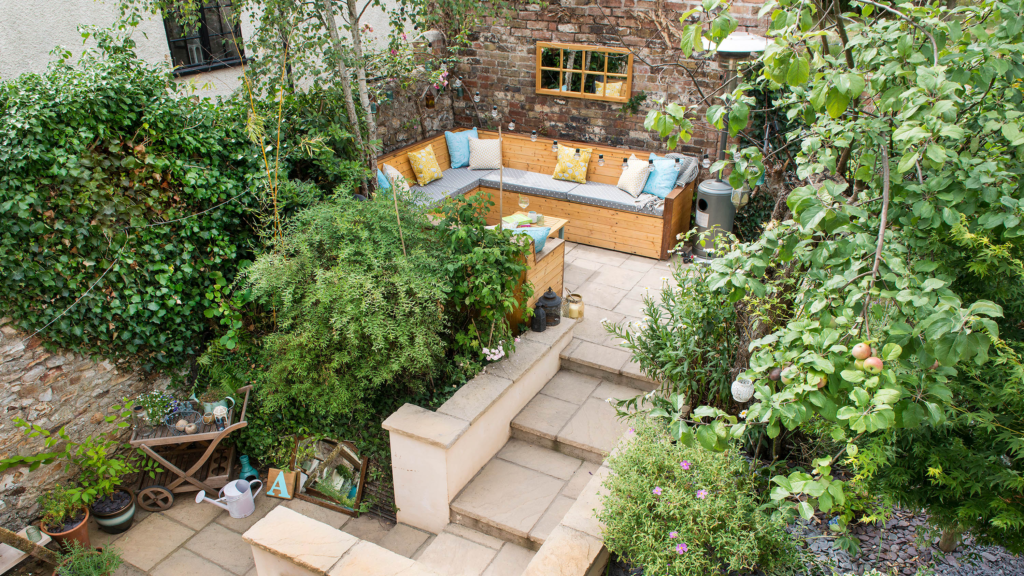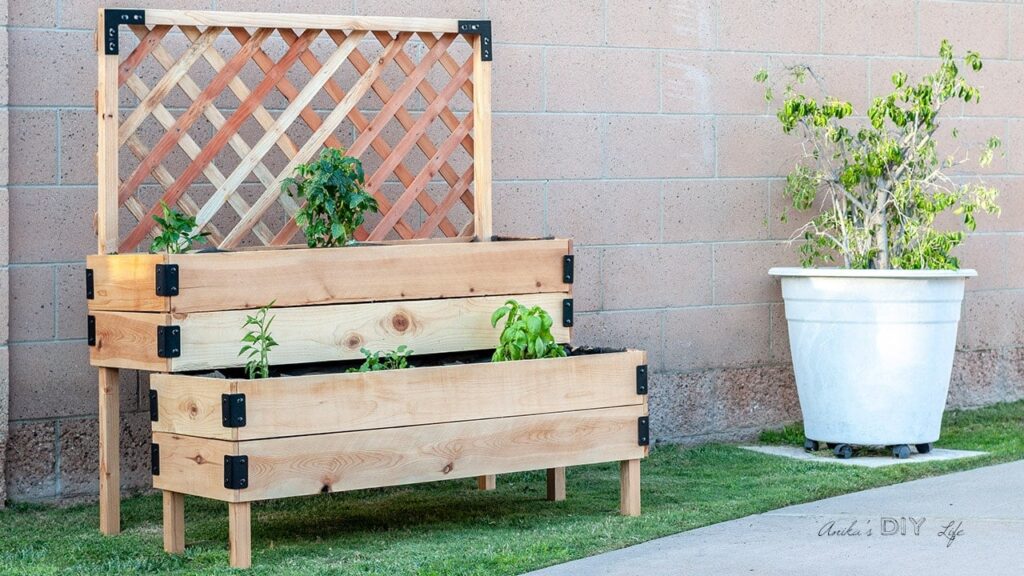Creating a tiered garden is one of the most effective ways to maximize your outdoor space and turn an ordinary yard into a stunning landscape. With its cascading levels and organized structure, a tiered garden not only enhances the aesthetic appeal of your yard but also makes gardening more efficient and fun. Whether you’re a seasoned gardener or a beginner, learning how to build a tiered garden is an exciting project that can be accomplished with the right tools, materials, and planning.
What Is a Tiered Garden?
A tiered garden is a multi-leveled gardening structure that allows you to grow plants, flowers, vegetables, or herbs in an organized and visually appealing way. Instead of planting everything on a flat surface, tiered gardens involve creating different layers or “steps,” which can be constructed using wooden boxes, stone walls, or even pre-made tiered planters. Each layer or tier provides its own growing space, which can be used for different types of plants based on their specific sunlight and water requirements.
This type of garden is especially popular in areas with uneven terrain or limited space, as it helps you make the most of your yard. Tiered gardens are also perfect for improving drainage and adding depth and texture to your outdoor design.
Why Should You Build a Tiered Garden?
Building a tiered garden offers numerous benefits, whether you’re looking to enhance your garden’s functionality, appearance, or productivity. Here’s why you should consider building one:
- Maximizes Space Efficiency: A tiered garden helps you utilize vertical space, which is ideal for small yards or sloped areas. Instead of spreading plants across a large flat area, you can stack your garden upwards.
- Improves Drainage: Each level of the tier naturally allows water to flow down to the next layer, preventing waterlogging and ensuring all your plants get adequate hydration.
- Enhances Aesthetic Appeal: Tiered gardens create a visually stunning, layered look that can serve as the focal point of your yard. Whether you’re growing vibrant flowers or leafy greens, the levels add texture and depth.
- Easier Access: A tiered design makes it easier to access each layer for planting, watering, and maintenance, reducing the need to bend over excessively.
Things You Need Before You Start
Before you start building your tiered garden, you’ll need to plan carefully and gather the necessary materials and tools. Here’s what you’ll need:

Choosing the Right Spot for Your Garden
The location of your tiered garden is crucial to its success. Look for an area in your yard that gets adequate sunlight based on the plants you intend to grow. Most plants require at least six hours of sunlight a day, so choose a sunny spot. If your yard is naturally sloped, it’s even better, as the slope can make it easier to build the tiers. Ensure the area is well-drained to prevent water pooling, which can damage plants.
Picking the Right Materials
The materials you choose for your tiered garden will depend on your budget and the look you want to achieve. Some common materials include:
- Wood: Cedar or redwood are excellent options because they are naturally resistant to rot and pests.
- Stone or Bricks: These provide a rustic and durable look, but they may require more labor to install.
- Recycled Materials: Old pallets, tires, or even repurposed concrete blocks can be used to create a budget-friendly and eco-friendly tiered garden.
Tools You’ll Need
Having the right tools on hand will make the process much smoother. Some essential tools include:
- Shovel
- Garden rake
- Hammer and nails (if using wood)
- Level
- Measuring tape
- Wheelbarrow
- Drill (optional for assembling wooden frames)
Step-by-Step Guide to Build a Tiered Garden
Building a tiered garden may seem complicated, but it’s actually straightforward if you break it down into manageable steps. Here’s a step-by-step guide:
- Plan Your Design
- Start by sketching out the design of your garden. Decide how many tiers you want (usually 2-4 levels work best), and determine the dimensions of each tier. Keep in mind that the base tier should be the largest, with each subsequent tier getting smaller as you go up.
- Prepare the Site
- Clear the area where you plan to build your garden. Remove any grass, weeds, or debris, and level the ground as much as possible. If the ground is sloped, you can use it to your advantage by building your tiers into the slope.
- Build the Tiers
- If you’re using wood, construct rectangular or square frames for each tier and stack them on top of one another, with the largest at the bottom.
- If you’re using stone or bricks, arrange them to create retaining walls for each level. Secure the stones with mortar if needed.
- Fill each tier with nutrient-rich soil, ensuring that each layer is even.
- Install Drainage
- To prevent water from pooling, add a layer of gravel or small stones at the bottom of each tier before adding soil. This will improve drainage and keep your plants healthy.
- Add Plants
- Once your tiers are built and filled with soil, you can start planting. Be mindful of how much sunlight each tier gets and choose plants accordingly. Place taller plants on the top tier so they don’t shade the lower levels.
How to Plant on Each Tier
Planting in a tiered garden requires thoughtful planning to ensure that all plants thrive. Here are some tips for planting on each tier:
- Top Tier: Use this level for plants that require the most sunlight, such as tomatoes, peppers, or flowers like marigolds and petunias.
- Middle Tier(s): These are ideal for medium-height plants like lettuce and spinach, or herbs such as basil and parsley.
- Bottom Tier: Plant ground-cover crops or trailing plants like strawberries, creeping thyme, or sweet potatoes.
Always group plants with similar water and sunlight needs together to make maintenance easier.
Tips to Keep Your Tiered Garden Healthy
Maintaining a tiered garden requires regular care and attention. Here are some tips to keep it healthy and thriving:

Use Drip Irrigation
Installing a drip irrigation system ensures that each tier gets the right amount of water without overwatering. Drip irrigation is efficient, reduces water wastage, and prevents soil erosion.
Protect Against Soil Erosion
To keep the soil in place, especially after heavy rainfall, consider using landscape fabric or mulch on each tier. This will help prevent soil erosion while also retaining moisture.
Rotate Your Crops
Suppose you’re growing vegetables, practice crop rotation to prevent nutrient depletion in the soil and reduce the risk of pests and diseases. Switch the types of plants on each tier every season.
Cost of Building a Tiered Garden
The cost of building a tiered garden can vary widely depending on the materials you use and the size of your project. On average:
- A small DIY wooden tiered garden might cost around $50-$150.
- Using stone or bricks can cost $200-$500 or more, depending on the size and type of materials.
- If you hire professionals to build a larger tiered garden, the cost could go up to $1,000 or more.
By using recycled or repurposed materials, you can significantly reduce costs while still achieving a beautiful design.
The Bottom Line
Building a tiered garden is an excellent way to create a functional and beautiful outdoor space, even if you have limited room or uneven terrain. With careful planning, the right materials, and a bit of effort, you can design a stunning multi-level garden that maximizes your yard’s potential and makes gardening more enjoyable.
Whether you’re growing flowers, vegetables, or herbs, a tiered garden can transform your outdoor space into a lush and vibrant sanctuary. Follow the steps outlined in this guide, and you’ll be on your way to enjoying a healthy, productive garden that you’ll be proud to show off.


